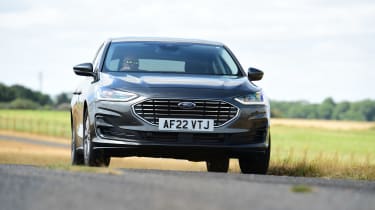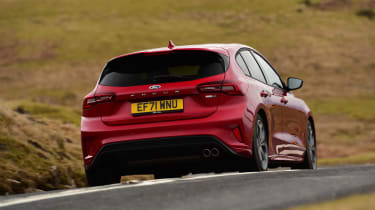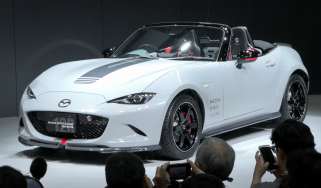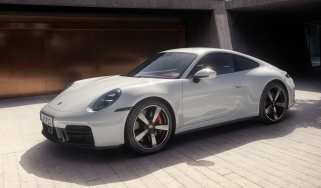Ford Focus review – ride and handling
Extremely competent, entertaining even, the Focus’s driving experience doesn’t disappoint
You’ll be glad to know the Focus is as good to drive as ever in this generation, but there is a caveat to that statement. Underpinning the current Focus is the ‘C2’ chassis, which is lower, wider and stiffer than the one it replaced. Overall rigidity was increased by 20 per cent, while the suspension mounting points are an impressive 50 per cent stiffer.
The suspension layout is also similar to before, combining MacPherson struts on the front axle with a multi-link set-up on the rear on higher-specification models. Adaptive dampers are also available, but we found the difference between Normal and Sport modes to be very subtle, and not worth the extra outlay.
On passive dampers, the Focus treads a good balance between ride comfort and body control. It’s not skewed too far in either direction, but seems to find harmony with the Focus’s control weights, making it feel congruous and well engineered. ST-Line models pick up a slightly firmer set-up, sitting 10mm lower than other models. The ride on the ST-Line is still very good, however, and remains our preference in the range.
Here lies the first caveat, though, as like no Focus before the multi-link rear suspension system is not standard across the range. Entry-level models with lower-powered engines make do with the torsion beam rear suspension set-up borrowed from the smaller Fiesta. While it’ll take a certain type of driver to notice the difference, cars on the basic suspension have the same issues as most cars on a torsion beam, namely a bouncier, less sophisticated ride quality and compromise in body control at higher speeds.
The steering is well weighted, with a natural feeling that articulates front-end feel just enough to give you a sense of how much grip is available. The estate version is nigh on identical to the hatch, perhaps feeling a passenger or so heavier when really pushed. The Estate’s compact multi-link set-up is slightly different to that of the hatch, liberating more boot space, but also has little overall effect on the handling unless you’re really pushing it, in which case the rear axle can feel a little more wayward and remote.
On its more sophisticated rear suspension, the chassis underneath is always composed, with plenty of travel in the suspension and solid wheel control. It takes quite a lot to push the Focus out of its comfort zone, and it feels more agile and engaging to drive than most, if not all of its mainstream rivals with the exception of the impressive new Honda Civic. This type of limit handling might not be what the average Focus owner will explore, but for the rest of us it’s excellent news.





